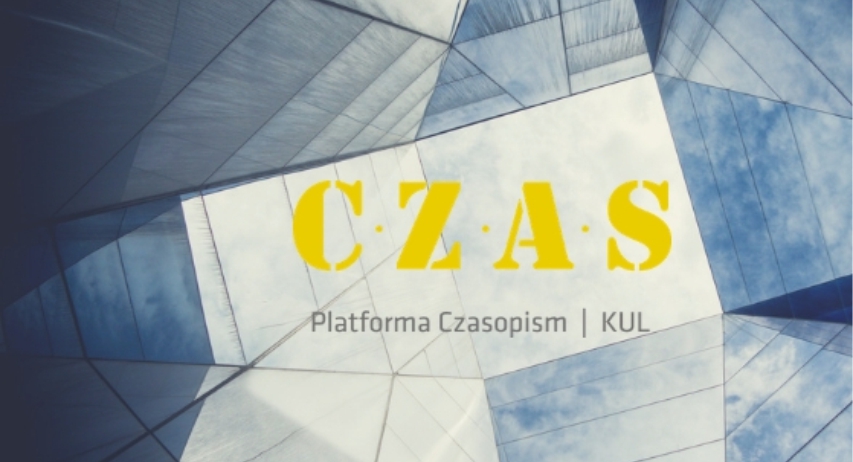Blessing and a Lay Person. Reflections Upon the Publication of the Fiducia Supplicans Declaration
Grzegorz Bachanek
The Cardinal Stefan Wyszyński University in Warsaw , Polandhttps://orcid.org/0000-0002-9154-2299
Abstract
The article draws attention to the need of a broader perspective on the act of blessing and a lay person in reference to the publication of the Fiducia supplicans Declaration. Blessings can play an important role in the life of a lay person by showing the beauty of God’s creation, developing an attitude of gratitude towards the Creator, helping them to get involved in the matters of the world in the right way, using material goods in the right way, rejecting the temptations of the evil spirit. In particular, they help to appreciate the treasure of human fertility, the value of a numerous offspring. God is the one who gives blessings, but He often does it through people. Also, in many situations lay people can and should bless. From the biblical times, children have been blessed by parents, grandchildren by grandparents, blessings are given at a time of greeting and saying farewell, also at mealtimes. All Christians are called to bless enemies. Blessing God and people is an important part of Christian prayer. The possibility to bless results from common priesthood given at baptism. It is even worth to consider the possibility that people who were not baptized, but who are aware of the existence of God and His creation, can bless. At times giving a blessing is wicked. It can be a praise of moral evil and an encouragement to behave badly, blurring the line between good and evil. Among lay people, it awakens a profound sense of being scandalized.
Keywords:
blessing, lay person, Fiducia supplicans, scandal, sacramentalsReferences
Alla S., Fiducia supplicans: Listening and Blesing Is the Way to Go, „Vidyajyoti Journal of Theological Reflection” 88 (2024) 3, s. 161–166.
Bachanek G., Teologiczne podstawy działalności trzeźwościowej ks. Karola Mikoszewskiego, WSP, XII (2017) 2, s. 25–41. (Crossref)
Bachanek G., Woda święcona (pobłogosławiona) jako wyraz powszechnego kapłaństwa wiernych, „Collectanea Theologica” 88 (2018) 2, s. 93–111. (Crossref)
Chrostowski W., Błogosławieństwa i ich znaczenie w Starym Testamencie, „Studia Włocławskie” 14 (2012), s. 51–67.
Czapnin S., Dlaczego zapomnieliście o prawdzie Bożej. Otwarty list do prawosławnych biskupów w Rosji, 23.01.2023, https://prchiz.pl/2023-01-23-list-do-prawoslawnych-biskupow-w-rosji [dostęp: 22.06.2024].
Czerski J., Błogosławienie w Starym Testamencie, „Roczniki Teologiczne” XLV (1998) 8, s. 133–145.
Durak A., Historyczno-teologiczne aspekty błogosławieństw, „Seminare. Poszukiwania naukowe” (1995) 11, s. 21–36. (Crossref)
Dykasteria Nauki Wiary, Deklaracja Fiducia supplicans o duszpasterskim znaczeniu błogosławieństw, https://www.vatican.va/roman_curia/congregations/cfaith/documents/rc_ddf_doc_20231218_fiducia-supplicans_pl.html.
Kudasiewicz J., Błogosławieństwo w Nowym Testamencie, „Roczniki Teologiczne” XLV (1988) 8, s. 147–165.
Mikołajczyk M., Historia i rozwój błogosławieństw w liturgii Kościoła katolickiego, „Ruch Biblijny i Liturgiczny” 29 (1976) 2–3, s. 162–171. (Crossref)
Mikołajczyk M., Błogosławieństwa dziś i jutro, „Ruch Biblijny i Liturgiczny” 30 (1977) 4, s. 205–213. (Crossref)
Müller G.L., Jedynym błogosławieństwem Kościoła jest prawda, która nas wyzwoli – uwagi na temat deklaracji Fiducia supplicans, https://www.ekai.pl/kard-muller-tekst-fiducia-supplicans-jest-wewnetrznie-sprzeczny-i-wymaga-wyjasnien/ [dostęp: 22.06.2024].
Obrzędy błogosławieństw dostosowane do zwyczajów diecezji polskich, t. 1, Katowice 2004.
Sinka T., Z teologii błogosławieństw. Rozumienie błogosławieństw, „Ruch Biblijny i Liturgiczny” 49 (1996) 3, s. 194–201. (Crossref)
Testa B., Sakramenty Kościoła, Poznań 1998.
The Cardinal Stefan Wyszyński University in Warsaw https://orcid.org/0000-0002-9154-2299
License

This work is licensed under a Creative Commons Attribution 4.0 International License.
This work is licensed under a Creative Commons Attribution 4.0 International License.






